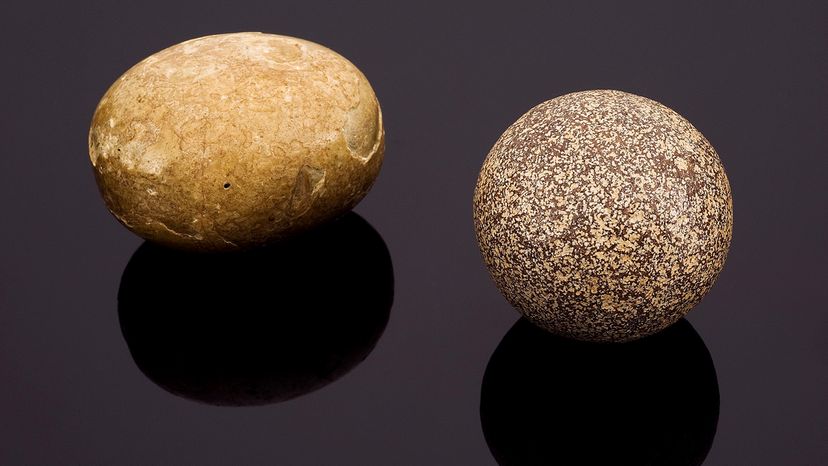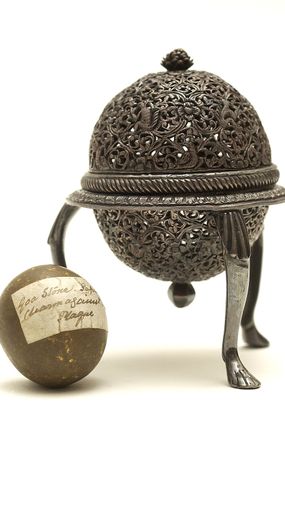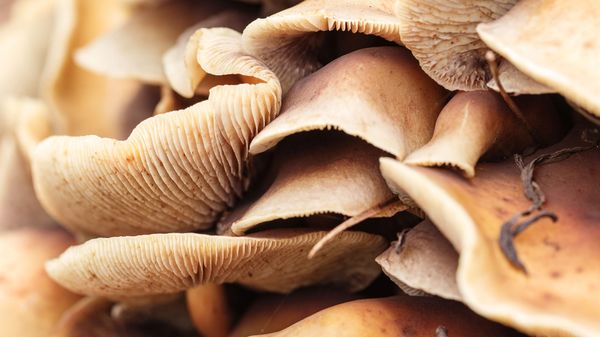
Remember how Professor Snape explained what a bezoar was in the first Harry Potter movie? A stone from the stomach of a goat that will save a person from most poisons. True enough in that magical realm. What about here in the Muggle world?
Snape had it partly right. A bezoar is a lump of hardened, undigested material found in the gastrointestinal tract of deer, antelope, goats, oxen and llamas. It forms when layers of calcium and magnesium phosphate build up around a small bit of plant fiber or a pebble. Stomach contractions squeeze and smooth it into a roughly round shape.
Advertisement

"Bezoar" comes from pad-zahr, a Persian word that means antidote. These rocklike objects were found in sacrificed animals and believed to be a universal cure for poison as well as leprosy, measles, cholera and depression. A bezoar could be worn as a charm, ground into a powder and consumed or dropped into a drink suspected to contain poison.
Arabian doctors had been using bezoars since the 8th century, and brought them into western medicine in the 12th century as an antidote to arsenic, a favorite poison used to assassinate European nobles. By the 16th century, use of bezoars was widespread among the very rich — they were valued at 10 times their weight in gold. Queen Elizabeth I even had a bezoar set in a silver ring.
People who couldn't get a real bezoar could opt for a knockoff. Jesuit priests in Goa, India formed shells, silt, amber, resin and sometimes bits of actual bezoars and crushed gemstones into hardened balls called Goa stones. These were also believed to counteract poison and cure the plague and were fabulously expensive.
In 1575, French surgeon Ambroise Paré carried out an experiment to debunk the curative powers of bezoars. A cook in Paré's house was caught stealing silver and sentenced to be hanged. Paré struck a deal: If the cook agreed to be poisoned, he would be given bezoar immediately. If he lived, he could go free. Unfortunately, the cook died in horrible pain hours later, and Paré had his proof.
Advertisement


